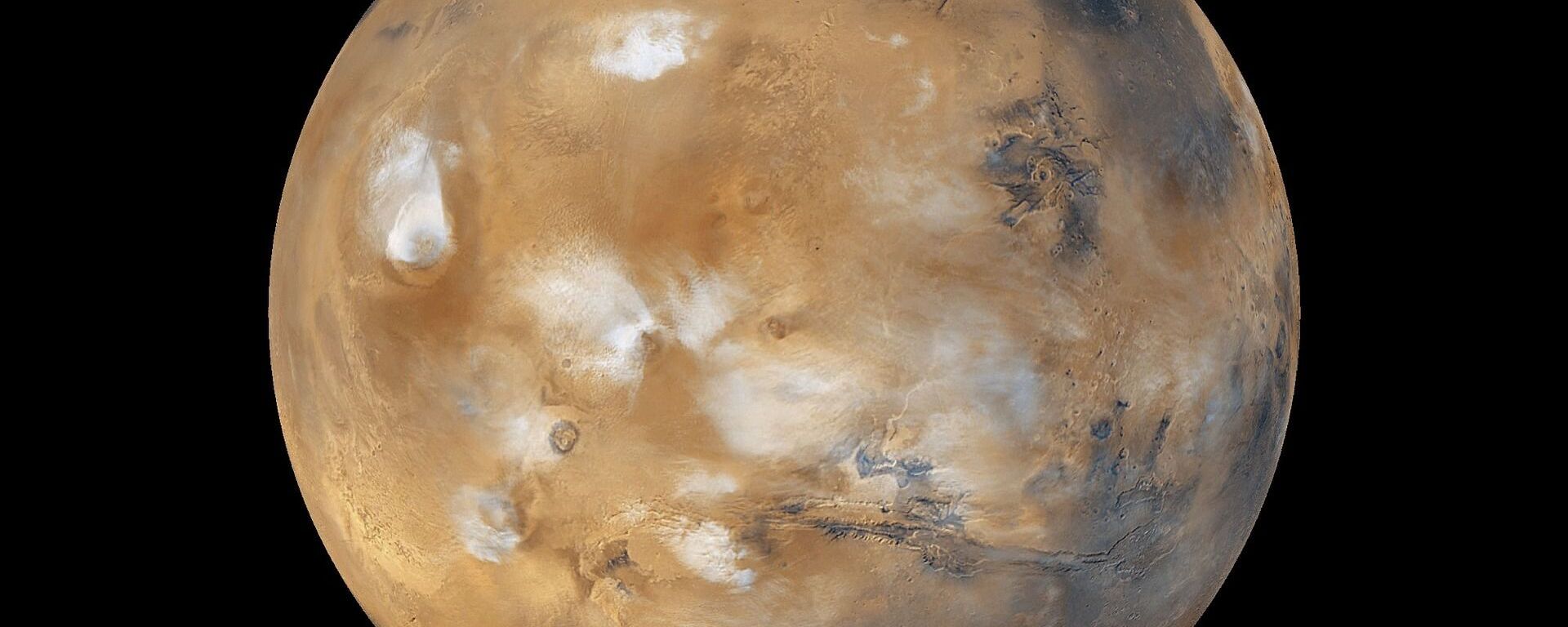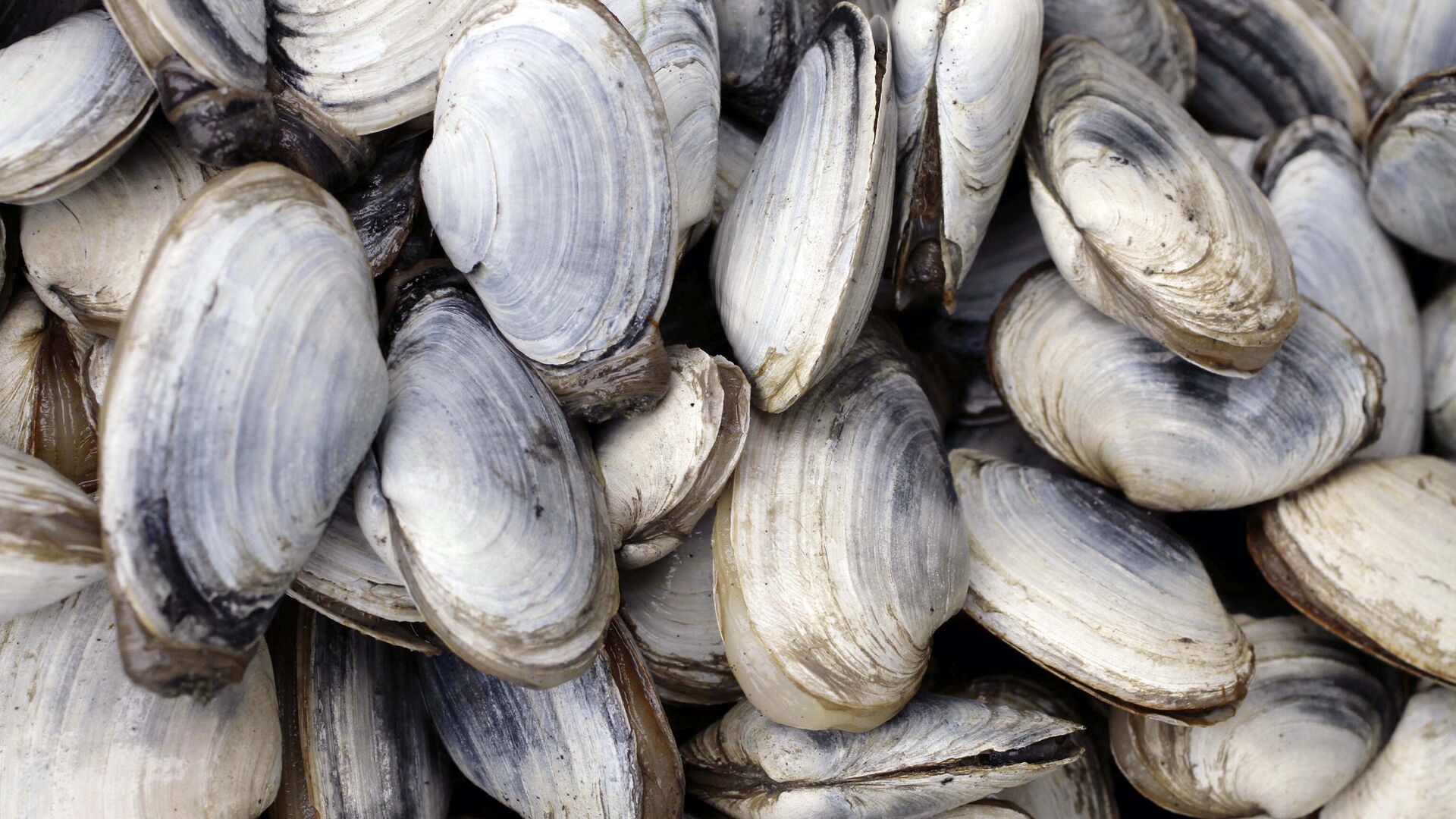https://sputnikglobe.com/20221118/back-from-the-dead-ancient-clam-refuses-to-go-extinct---1104380537.html
'Back From the Dead' Ancient Clam Refuses to Go Extinct
'Back From the Dead' Ancient Clam Refuses to Go Extinct
Sputnik International
ancient clam refuses to go extinct
2022-11-18T11:47+0000
2022-11-18T11:47+0000
2022-11-18T11:47+0000
science & tech
extinct
fossils
university of california
https://cdn1.img.sputnikglobe.com/img/07e6/0b/12/1104378296_0:160:3073:1888_1920x0_80_0_0_01d12270533b8a5561d1e97b91c187b3.jpg
A tiny luminous clam that was believed to have gone extinct around 40,000 years ago has suddenly been extraordinarily discovered alive by a marine ecologist in California.The bivalve, roughly 11 millimeters in length, is named Cymatioa cooki, and was previously identified from its fossil illustrations. However, the attentive eye of Jeff Goddard, scouring the tidal pools on a beach not far from Santa Barbara in autumn 2018, caught sight of something odd and previously unseen. These were two translucent white clams whose shells measured no more than 10 millimeters in length. It was after they thrust forward a white-striped foot outstripping the length of their shell that the researcher at the University of California, Santa Barbara, had a suspicion that he had seen something like it somewhere. Goddard sent photographs of the clams to a colleague of his, Paul Valentich-Scott, malacology curator at the Natural History Museum of Santa Barbara. The expert seemed no less puzzled, as he tried to figure out what it was. In the wake of a spate of failed efforts to come across the sneaky clams again, in 2019 the two scientists snapped up a live specimen of the elusive bivalve. Once they compared it with fossil records, it struck them that it appeared to hail back to a bivalve chronicled in the 1930s by George Willett.The species had been named by the paleontologist after amateur shell collector Edna Cook, who unearthed the mini-clams in a 30,000-strong collection of shells and suspected they were special.As they wondered how the ancient clams had reached this particular area, the scientists speculated that a warm water current had possibly carried them from their typical habitat farther south.
https://sputnikglobe.com/20221012/microbial-lifeforms-likely-thrived-on-mars-in-ancient-past-scientists-say-1101780314.html
Sputnik International
feedback@sputniknews.com
+74956456601
MIA „Rossiya Segodnya“
2022
News
en_EN
Sputnik International
feedback@sputniknews.com
+74956456601
MIA „Rossiya Segodnya“
Sputnik International
feedback@sputniknews.com
+74956456601
MIA „Rossiya Segodnya“
ancient clam found, clam believed extinct, tiny elusive clams, marine ecologist finds ancient clam species, what extinct species came back to life,
ancient clam found, clam believed extinct, tiny elusive clams, marine ecologist finds ancient clam species, what extinct species came back to life,
'Back From the Dead' Ancient Clam Refuses to Go Extinct
Back in the 1930s, paleontologist George Willett was the first to describe the fossilized bivalve – a tiny, 10-millimeter mollusk discovered by amateur shell collector Edna Cook in a collection of fossils hailing from an area in Los Angeles’s Baldwin Hills.
A tiny luminous clam that was believed to have gone
extinct around 40,000 years ago has suddenly been extraordinarily discovered alive by a marine ecologist in California.
The bivalve, roughly 11 millimeters in length, is named Cymatioa cooki, and was previously identified from its fossil illustrations. However, the attentive eye of Jeff Goddard, scouring the tidal pools on a beach not far from Santa Barbara in autumn 2018, caught sight of something odd and previously unseen. These were two translucent white clams whose shells measured no more than 10 millimeters in length.
It was after they thrust forward a white-striped foot outstripping the length of their shell that the researcher at the University of California, Santa Barbara, had a suspicion that he had seen something like it somewhere. Goddard sent photographs of the clams to a colleague of his, Paul Valentich-Scott, malacology curator at the Natural History Museum of Santa Barbara. The expert seemed no less puzzled, as he tried to figure out what it was. In the wake of a spate of failed efforts to come across the sneaky clams again, in 2019 the two scientists snapped up a live specimen of the elusive bivalve. Once they compared it with fossil records, it struck them that it appeared to hail back to a bivalve chronicled in the 1930s by George Willett.
The species had been named by the paleontologist after amateur shell collector Edna Cook, who unearthed the mini-clams in a 30,000-strong collection of shells and suspected they were special.
“Once I physically saw that original specimen that Willett had used for his description, I knew right away” that the live clam was the same species, Valentich-Scott told the media.
As they wondered how the ancient clams had reached this particular area, the scientists speculated that a warm water current had possibly carried them from their typical habitat farther south.

12 October 2022, 18:41 GMT


